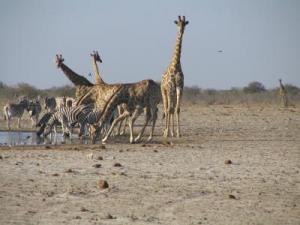
Often we assume that today’s condition whether pollution or any matter related to ecosystem is the outcome of present scenario. However, it is not the case the ecology we observe today is a product of our past deeds or of history, to be more precise.
Researchers separated some herbivorous animals with the help of large electric fences on a ranch in central Kenya from May 2004 to December 2005 and observed alterations in the populations of trees, beetles, lizards and other plant and animal species.
What they concluded was that the species under observation escalated ‘in the absence of large plant-eating mammals.’
For instance, when the animals who directly fed on plants were removed from a particular area, the vicinity experienced growth in its vegetation, which further became responsible for rising population of insects.
In addition, this was directly proportional to ‘an increase in the insects’ predators, such as lizards’. Thus, an action of a few principal species is enough to create some commotion in the entire ecosystem.
They also postulated that the snowball or cascading effect depends upon landscapes, as it could be different across varied regions. This could be predicted in terms of ‘primary productivity’, which means conversion of solar energy into plant tissue during photosynthesis.
Areas in where primary productivity is higher there would be an increase in vegetation, here the snowball effect would be less, perhaps ‘because more productive plant communities absorb the impacts of herbivory and buffer the remainder of the community’.
Thus, the researchers concluded that the snowball effect is very relevant as it throws light on how the ecosystem took a turn after the vanishing of ‘mega fauna’ species as we can see in case of North America.
Principal author Robert Pringle added,
‘humanity faces a lot of important decisions about how to manage Earth’s ecosystems in the next few decades. By studying the ecology of places like Africa, where large mammals still exist, we can get glimpses of how life used to be organized in places like Europe and North America, and those inferences help explain phenomena that would otherwise seem strange. Snapshots of ecological history, even if from another continent, can help guide us to more robust conclusions about today’s ecosystems and their conservation management.’

